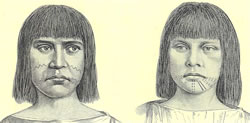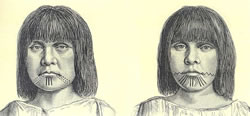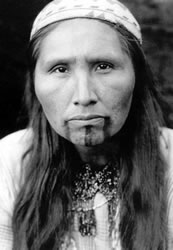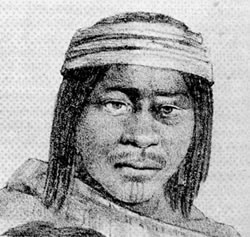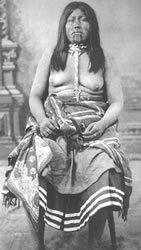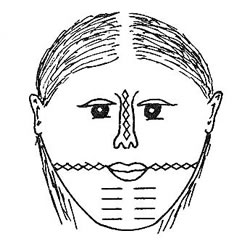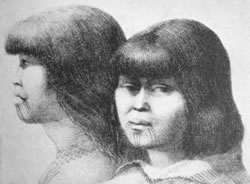 |
|||||||
| Celeb Tattoos | Facts & Stats | Designs & Symbols | History | Culture | Links | Tattoo Galleries | Contact | |||||||
|
|||||||
But the practices surrounding the tattoo custom also enabled women to exercise control over their bodies during the course of their lifetimes and onwards into the afterlife. This was because the power of tattooing was derived from magical forces that transcended time, space, and human existence itself. This article is a geographic and encyclopedic exploration into the indigenous practices of tattooing in the western United States. Most of the sources used here were taken from obscure records published at the turn of the 20th century when the last generation of tattooed men and women were still living. Many writers confessed that tattooing had little significance for the people who practiced the custom, but I suspect that this was not the case especially since very complex puberty rites accompanied the application of tattoo itself. For this reason, I invite you – the reader – to explore the sources and conduct additional research so that we can fill in the gaps. Because for me, tattooing was one of the most incredible artistic traditions of Native North America and it deserves to be recognized and no longer overlooked. Out West: A Tribal Geography of TattooingThroughout California, indigenous tattoos for both men and women usually took the form of various kinds of chin markings or “111” designs that were worn by many different tribes inhabiting nearly every region of the state (e.g, North›South: Shasta, Karok, Yurok, Hupa, Wintu, Lassik, Wailaki, Sinkyone, Yuki, Huchnom, Pomo, Patwin, Konkow, Maidu, Nisenan, Eastern Miwok, Coast Miwok, Costanoan, Yokut, Wukchumni, Chukchansi, among others). However, some groups also tattooed their cheeks (e.g., Yuki, Wailaki, Huchnom, Mono), while others practiced more complete forms of body tattooing (N›S: Pomo, Patwin, Nisenan, Eastern Miwok, Costanoan, Yokut, Wukchumni, Chukchansi, among others) that covered breasts, abdomens, arms, and sometimes legs and thighs. In the American Southwest (especially Arizona and southern California), tattooing was almost entirely confined to the lower Colorado River tribes and their neighbors: Mohave, Yuma, Luiseño, Diegueño (Tipai-Ipai), Cocopa, Maricopa, Pima, Yavapai, Walapai, and Havasupai. And for the most part, women (and more rarely men) living here also restricted their tattoos to the chin. Among the Sinkyone of California, girls undergoing their puberty and tattooing ceremonies at their first and second menses fasted for five days. On the sixth day they were led to a river for a “purification swim.” They employed scratchers for the head and body in order to prevent body sores and blindness, and were compelled to use a special drinking basket and tube of straw to extract any liquids. They refrained from work during the fast and were tabooed from eating grouse, fish, salt, and other meats. During the ceremonial period, men, women, and children danced and sang about the girl to ensure her future health and to prevent sickness or disaster to the group as a whole. As the ritual concluded, a girl was fully tattooed with a sharp deer bone awl by a female expert who utilized carbon as pigment. Several elders interviewed about 1900 stated that tattooing was thought to ensure good luck, long life, and make a girl more beautiful. The patterns consisted of a line from the corners of the mouth to the middle of the cheek, one to three straight lines on the chin, and one straight line down the cheekbone to below the corner of the mouth. Other more rare designs existed and resembled a type of zigzagging necklace pattern tattooed from shoulder to shoulder. Next Page | 1 | 2 | 3 | 4 | 5 | 6 | 7 | Museum photo gallery of the images on this page may be seen here. |
|||||||
|
Other tattoo articles by Lars Krutak
|
|||||||
| Celeb Tattoos | Facts & Stats | Designs & Symbols | History | Culture | Links | Tattoo Galleries | Contact | |||||||
© VanishingTattoo.com All rights reserved.
